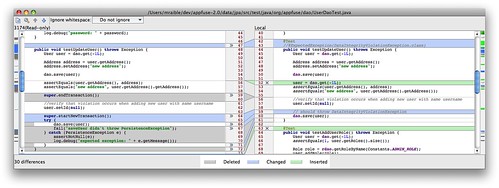 One week before my home computer was stolen from my living room, the iPad was announced. After watching the initial video, I figured I might want to get one. Fast forward to iPad release day. I was skiing with a friend in Winter Park as I was scratching my head trying to come up with good Easter presents for my kids. Then it hit me: An iPad would be an excellent Easter gift for my kids.
One week before my home computer was stolen from my living room, the iPad was announced. After watching the initial video, I figured I might want to get one. Fast forward to iPad release day. I was skiing with a friend in Winter Park as I was scratching my head trying to come up with good Easter presents for my kids. Then it hit me: An iPad would be an excellent Easter gift for my kids.
I called the Cherry Creek Apple store and asked if they had any left. They said they did, but they'd likely be sold out before the end of the day. I arrived back in Denver around 3 and was 2nd in line at the Apple Store at 3:30. 5 minutes later, I walked out with an iPad. They were sold out of 32GB models, so I went with the 64GB.
CNET has a good about the 5 Reasons NOT to get an iPad. There #1 reason is great: because you don't need one. They're absolutely right, I didn't need an iPad. I wanted a new home computer so I don't have to pack my MacBook Pro back and forth to the office. However, I realized that most of the time I'm at home, I'm not doing much hard-core computing. Most of the time, I'm checking e-mail, reading Twitter or reading articles. So I bought it because it was cheaper than a new home computer, but I also realize it's not a computer replacement.
It's really just a big iPhone.
In every aspect, it's a larger iPhone. Abbie's first words when she opened it on Easter Sunday were "It's a big phone!" It is a big iPhone, but it's much more pleasant for reading articles and e-mail. Beyond that, it seems good for games, but it's certainly not super-duper fantastico. It's a bit heavy; too heavy to read as you would a book. After holding it for an hour or two last night, my left hand started to get sore. Also, its keyboard sucks. Maybe I'll get used to it in the long run, but without the tactile feedback of keys, it can be difficult to type without looking. The other things I don't like about it are:
- There are very few good apps (iPhone apps work, but they're small).
- The screen gets dirty quickly and it looks kinda gross when it's not lit up.
- The Photos app doesn't work at all for me. It says "Updating Library" when I open it, then crashes several seconds later. Maybe I have too many pictures (12.5K items, 28.5 GB).
- When it's synching with my laptop, it constantly connects and reconnects and makes a loud noise each time.
I took the iPad to work on Monday and received some interesting feedback from co-workers.
There are some good things about it. First of all, it's wicked fast. Apps *pop* and load their data very quickly. Way faster than my iPhone and faster than both my MacBook Pro and the powerhouse Mac Pro I use at work.
I really like the newspaper apps for reading the latest news articles. I'm not much of a news person, but there's a good chance I read more of it because the apps are so pleasing to the eye. Also, the Netflix app sucked me in as soon as I started reading about it. I've bought my kids several movies on iTunes, but there's still not a huge selection to choose from. With Netflix and its live streaming, we have seemingly thousands of movies to choose from and they're all a touch away. The Mail app is also pleasant to use, possibly moreso than Mail.app on OS X and Gmail in any ol' browser.
There's a good bit of me that's underwhelmed with the device, but I think it has a lot of potential when more apps start appearing. It also seems to need some accessories right away: namely a case to carry it in and a shield to keep clean. I could also see getting a stand for it to enhance its digital picture frame feature. If I could plug it into my HD TV, it might even eliminate my need for OnDemand Movies and DVDs.
I think the biggest potential for the iPad is kids, baby boomers and couples. There's a good chance all of these demographics have a real computer in their home, but the head of household doesn't want to spring for two. Take my mom for instance, she wants an iPad for e-mail because my dad always hogs their iMac. My kids aren't that enthralled with it, but it took them awhile to appreciate the Wii and iPhone. With the Wii, it was the Super Mario Bros. game that reeled them in. Same story with my iPhone; they love the games.
My guess is the real attraction of the iPad will be the apps that are built for it. I can't wait to see what developers come up with.

























